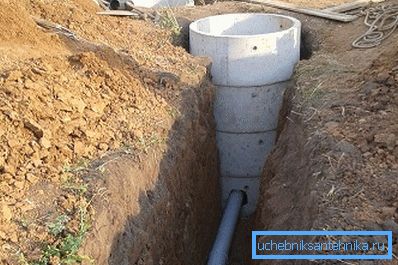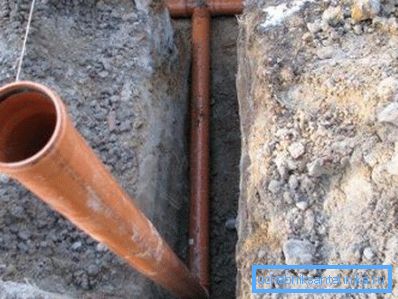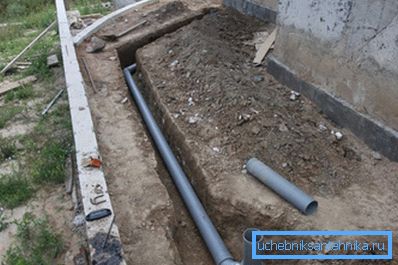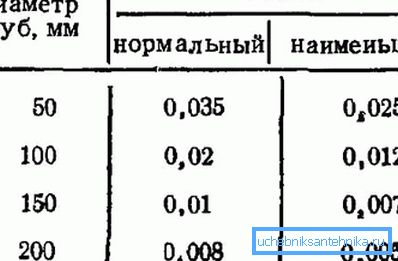How is the construction of sewer pipes
The efficiency of sewage systems in residential buildings depends on strict compliance with regulatory requirements and certain rules for their equipment. Neglecting to maintain them clearly or making mistakes can negatively affect the daily operation of gravity highways. To avoid this, we will tell you how to lay sewage pipes with your own hands correctly.

General information
Independent construction of sewage infrastructure makes it necessary to get acquainted in detail with the theoretical knowledge that will be needed when performing installation work in this area. First of all, it is necessary to understand that there is a gradation on internal and external networks.
Each of these types has its own pipe products made of different materials and different diameters. The connection of the linear nozzles and fittings for the connection of pipes that serve as wastewater removal must be performed with a certain dexterity while scrupulously maintaining the angle of inclination.

The main feature of the external sewage system is that it fits into the soil adjacent to the buildings. In this case, two installation methods are used for gravity pipelines:
| Open | In a dug-out trench, a sand cushion wakes up on the bottom and a highway is mounted on it. Pipes are filled up with raised ground without additional manipulations. |
| Closed | This method is more time consuming. For its arrangement special reinforced concrete products are used, which are U-shaped. After placing the pipelines, rectangular trays are covered with plates. In this case, the price of the whole structure will be more expensive. |

Tip: in order to save the improvised trays can be laid out using red brick.
The calculation of the depth of the sewer lines
Before deciding what will be the depth of the sewer pipe in the ground, it is necessary to consider several factors.
Among them stand out:
- Soil freezing rate for this climate zone.
- Technical specifications (strength, susceptibility to deformation) of the materials from which the pipes are made.
- Accounting for dynamic and static loads on the location of pipelines (carriageways, possible constructions).
- The end point of the constructed sewer system: the entrance to the central collector or the neck of an individual septic tank.
It follows that the fundamental criterion for determining the level at which the wastewater will be discharged is the indicator of soil freezing.

Tip: information about this can be obtained from specialized directories that comment on these values for various communication networks.
Given the climatic zone, it is impossible to ignore the features of the terrain, which are under the jurisdiction of engineering geology. In particular, the trouble-free operation of sewer pipes is influenced by the rational adherence to the strength of products (resistance to sagging on straight sections) and the qualitative characteristics of the soil.
The maximum allowable depth in dry soils is 8 m, and for soils with increased water absorption, this figure drops to 6 m.
A rigid framework for the depth of laying of external sewer networks is not provided for in the SNiP, since it is not possible to predict in advance at what level the new pipeline will join up with the collector. After all, no one will deliberately lower the pipes, if at the same time they pass well below the central collector or the inlet of the septic tank.
As a rule, the critical slope is calculated on the basis of the amplitude of the levels, taking into account the distance from the collector (septic tank) to the structure from which the sewage drainage takes place.
The arrangement of individual sewage necessarily begin with immersion in the ground septic tank. The bias of the system will be largely dictated by the depth to which its groundwater will be buried.

If this depth does not correspond to the frosts typical for the passage of winters in the region, pipeline insulation is used. Warming is carried out by building materials or special covers of polyethylene foam of various thickness.
As an option, a heating electric cable is used, with which the areas that are extreme for freezing are wound in a spiral. It connects at low temperatures and provides the usual mode of operation.
Features of arrangement of external sewer pipelines
The following is a guideline to help you avoid major errors:
- Pipe laying is preceded by a sewage treatment plant.
- The depth of the trenches should provide optimal slope, which will facilitate the smooth removal of wastewater.
- Mandatory presence of depreciation bedding at the bottom of the trenches. Special attention is paid to the places where the joining of pipes takes place.
- In the places of connection of several branch pipes or on sharp turns of the sewer main, the equipment of inspection wells is recommended.

- Strict observance of the direction of the bell-type method of pipe joining (the socket is always at the opposite end of the pipe from the septic tank).
- Backfilling of trenches is carried out first with a sand composition, and then with a total mass of soil. It is necessary to exclude tamping in the middle of the pipe in order to prevent sagging in the ground and promote congestion.
Pitch and pipe fastening
- The angle of inclination of sewer pipelines takes into account the diameter of the pipe and the empirically obtained velocity characteristic of gravity discharges. It is advisable that the withdrawn liquid mass is moved at a speed of 0.7-1 m / s. From this it follows that for pipes with a cross section of 50 mm, a slope of 3 cm per linear meter is preferable, and for O110 mm only 2 cm is sufficient in the same section.
- Domestic sewer networks, both in a vertical position when equipping risers in multi-storey residential buildings, and in horizontal placement require fixation to the walls. For this, metal and plastic clamps of various configurations are used.
The distance of fasteners from one to another when placed horizontally should be approximately equal to the diameter of the pipe increased ten times. If it is a pipe O50 mm, the distance between fasteners is 0.5 m.

- Sewer risers require fastenings in 1-1.3 m. To level the discomfort from the sound of the drains, sound-absorbing covers and rubber cuffs on clamps are used.
Conclusion
The device of sewer drains the difficult and responsible decision which should consider a set of factors. How you make a preliminary calculation will depend on the whole structure, as well as its further operation. Laying of sewer pipes outside the house can be done in an open and closed way. The video in this article will help you find additional information on this topic.